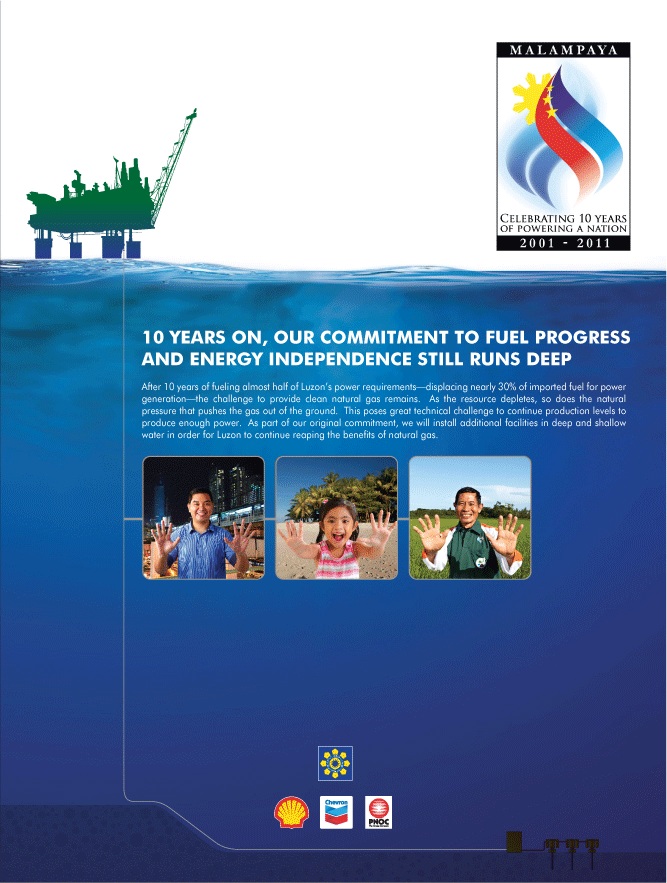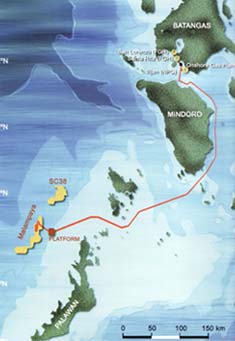Manila, 9 December 2011 – The Malampaya Deepwater Gas-to-Power Project marks 10 years of natural gas production since commencing operations in 2001. Fueling three gas-fired power stations generating a total of 2,700 megawatts, the country’s reliance on imported fuel for power generation has been reduced by approximately 30%, with natural gas from Malampaya currently meeting 40-45% of Luzon’s power requirements.
Malampaya is a national government project lead by the Department of Energy and operated by Shell Philippines Exploration B.V. (SPEX) on behalf of joint venture partners Chevron Malampaya LLC and the Philippine National Oil Company-Exploration Corporation (PNOC-EC).
Deepwater technology is utilized to extract natural gas from some 3,000 meters below sea level which involves remote subsea facilities. From the wells, wet gas is transported through flowlines to an offshore shallow water production platform for initial processing. Condensate is stored at the base of the platform while the dried gas is transported via a 504-kilometer underwater pipeline to the onshore processing gas plant in Batangas. Two onshore pipelines transport the fuel to three gas-fired power stations, namely, Sta. Rita (1,000 MW), San Lorenzo (500 MW) and Ilijan (1,200 MW).
Natural gas from Malampaya likewise fuels the government’s pilot Compressed Natural Gas for public transport launched in 2008.
Malampaya is moving into its next phase of development, kicked-off in August 2011, to maintain the level of gas production for the remaining life of the field. Two new wells will be drilled and developed by 2014 for Malampaya Phase 2, and a new depletion compression platform will be installed by 2015 for Malampaya Phase 3.
As of September 2011, the government’s share in Malampaya revenues has reached US$5 billion and forecasted to reach US$10-12 billion over the life of the project.
Natural gas is the cleanest and most efficient fossil fuel compared to other fuels used for power generation. It is estimated that some 1.35 million tonnes of carbon dioxide are displaced when the power stations are operating in full 2,700 MW capacity, compared to other fuels used for power generation.








